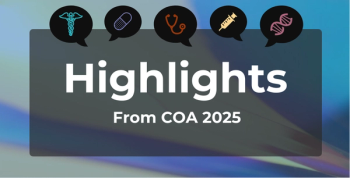
VOYAGER-PAD: Less Risk of Events With Rivaroxaban After Treatment for Blocked Arteries
The study, Vascular Outcomes Study of ASA Along with Rivaroxaban in Endovascular or Surgical Limb Revascularization for PAD (VOYAGER-PAD), was designed to fill a knowledge gap: it asked whether a well-known therapy developed to prevent blood clots could be used to prevent events, including acute ischemia in the leg for patients after revascularization.
Patients with peripheral artery disease (PAD) are 15% less likely to suffer a major cardiovascular event or death after undergoing a procedure for blocked arteries in their legs if they take rivaroxaban along with aspirin, instead of just aspirin, according to results presented this morning.
Findings from VOYAGER-PAD, involving 6564 patients, were presented online during a late-breaking session of the 2020 meeting
PAD in the lower extremities occurs when there is a buildup of plaque in the arteries, known as atherosclerosis, that restricts blood flow from the heart to the legs. About 8.5 million people over age 40 in the United States have PAD, which is linked to higher rates of diabetes, obesity, and heart disease. Some patients who have PAD need a procedure called revascularization to alleviate symptoms, but these patients may remain at risk for events such as heart attacks, ischemic strokes, or death for cardiovascular causes. Of particular risk is acute limb ischemia—a so-called “heart attack in the leg,” that can lead to amputation.
The study, Vascular Outcomes Study of ASA Along with Rivaroxaban in Endovascular or Surgical Limb Revascularization for PAD (VOYAGER-PAD), was designed to fill a knowledge gap: it asked whether a well-known therapy developed to prevent blood clots could be used to prevent events including acute ischemia in the leg for patients after revascularization. Researchers said this study answers important questions remaining after
“VOYAGER helps to underscore that PAD is a different disease state than coronary disease and different than stroke. Although they're all unified by an underlying biology of atherosclerosis, the character and the nature of that disease is different,” lead study author Marc P. Bonaca, MD, of the University of Colorado School of Medicine, told The American Journal of Managed Care® in an interview.
“The population in VOYAGER is very sick—a lot of comorbidity. You can tell just from the mortality rate, how sick the population is, yet only 11% ever had a plaque rupture event or myocardial infarction,” he said.
The international, event-driven trial, which took 3 years to complete, showed that while patients taking rivaroxaban had higher rates of bleeding, there was no excess of serious events such as intracranial or fatal bleeds. This can be a concern for patients taking anticoagulants.
Data and findings from VOYAGER-PAD are as follows:
- All patients in the study had symptoms that called for limb revascularization; 3286 patients were assigned to take 2.5 mg doses of rivaroxaban, twice daily, while 3278 were assigned to the placebo group. Both groups took 100 mg of aspirin.
- The primary efficacy outcome, a composite of acute limb ischemia, major amputation for vascular causes, myocardial infarction, ischemic stroke, or death from cardiovascular causes, occurred in 508 patients in the rivaroxaban group and 584 in the placebo group. Kaplan—Meier estimates of the incidence at 3 years were 17.3% for rivaroxaban and 19.9% for placebo; hazard ratio (HR) 0.85, 95% confidence interval (CI), 0.76 to 0.96; P = .009.
- The primary safety outcome was major bleeding under the Thrombolysis in Myocardial Infarction (TIMI) classification. TIMI major bleeding occurred in 62 patients in the rivaroxaban group and in 44 patients in the placebo group (2.65% vs 1.87%; HR, 1.43; 95% CI, 0.97- 2.10; P = .07).
- Major bleeding defined by the International Society on Thrombosis and Haemostasis (ISTH) was a secondary safety outcome. ISTH major bleeding occurred in 140 patients in the rivaroxaban group, as compared with 100 patients in the placebo group (5.94% vs 4.06%; HR, 1.42; 95% CI, 1.10 -1.84; P = .007).
In contrast to actual heart attacks of the heart, many patients and clinicians are unfamiliar with acute limb ischemia, the risk and the poor outcomes associated with severe complications of PAD,” Bonaca said
Rivaroxaban is sold as Xarelto by Janssen, which funded the study with Bayer.
Matthew Gavidia contributed to this report.
Reference
Bonanca MP, Bauersachs RM, Anand SS. Rivaroxaban in peripheral artery disease after revascularization [published online March 28, 2020]. N Engl J Med. 2020; DOI: 10.1056/NEJMoa2000052
Newsletter
Stay ahead of policy, cost, and value—subscribe to AJMC for expert insights at the intersection of clinical care and health economics.








